Haswell Z87 Motherboard Preview: 50+ Motherboards from ASUS, Gigabyte, ASRock, MSI, ECS, Biostar and EVGA
by Ian Cutress on May 22, 2013 5:00 PM ESTGigabyte Z87
While Gigabyte has not released anything officially, we have had a variety of leaks from press events, IDF Beijing, and on the official Facebook pages from the main Gigabyte page as well as their Tech Column and UK pages, showing off static images of motherboards in the office. We can determine the following models will be on offer, amongst others:
Gigabyte B85-HD3
Gigabyte Z87-D3HP
Gigabyte Z87X-D3H
Gigabyte Z87X-UD4H
Gigabyte Z87X-UD5H
Gigabyte G1.Sniper 5
Gigabyte G1.Sniper M5 (mATX)
Gigabyte Z87X-OC Force
Gigabyte Z87X-OC
Gigabyte Z87N-WiFi (mITX)
Gigabyte B85-HD3
Our recent review of the Z77-HD4, and requests for some of the cheaper models to be reviewed, means that motherboards like the B85-HD3 are definitely on our radar for future reviewing. This was snapped up at Beijing IDF:
Much like the HD4 we had in, the motherboard is not SLI certified but will support two GPUs in Crossfire – though as we discovered if that second card is at x4 it might not perform to its full capability. The HD3 shown does not have VRM heatsinks on board, so is probably a final revision sample until some of the heatsink get worked out. There is also a shot of the B85 silicon on show, with lines marking out the chipset heatsink area.
Gigabyte Z87-D3HP
Onto the full Z87 models now, and the D3HP is still lower down the range (the important number being ‘3’), but I would assume the H stands for HDMI, and P might be for Performance. From the board shot we can tell that this motherboard comes in an x16/x4 configuration, but does have an Intel LAN:
Like the –C and –A from ASUS, we get PCI slots and the SATA connectors on the D3HP are at right angles to the motherboard as they are unlikely to get big PCIe cards in the way. Gigabyte still sticks with their DualBIOS at this end of the spectrum, and it is worth noting that the two USB 3.0 headers on board might suggest that the in-the-box package comes with a front USB 3.0 panel. Although slightly blurry, the audio chip is definitely a Realtek ALC88x, probably the 889.
Gigabyte Z87X-D3H
The X series of motherboards is where Gigabyte starts to organize PCIe lanes to benefit multi-GPU users, and as such the D3H is x8/x8 on the SLI front. It seems that we also get a PCIe 2.0 x4 at the bottom, and a PCI slot. Intel NICs seem to be a prominent feature up and down the Z87 range from Gigabyte, which is always a plus.
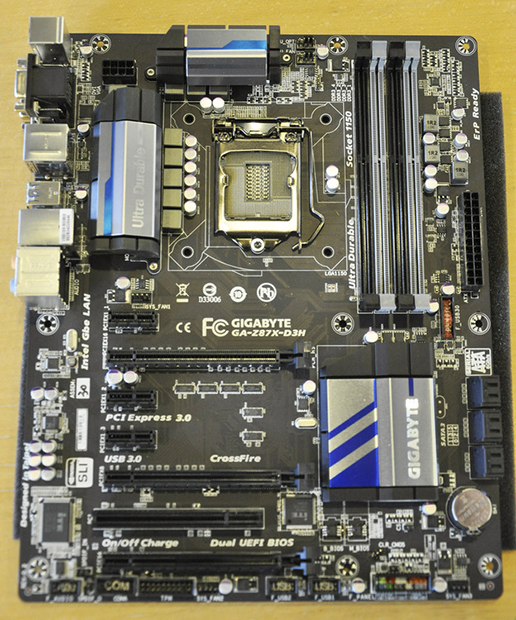
At this level we do not see any extra SATA 6 Gbps or USB 3.0 ports, either from IO organization or controllers. As before this looks like a preview board, hence the lack of VRM heatsinks.
Gigabyte Z87X-UD4H
The board that gets the most visual makeover from Gigabyte is the UD4H, which sits in the middle of the range. We have not got shots of the UD3H, but the UD4H comes in with a red styling, a good sized heatsink, Intel NIC, extra SATA 6 Gbps ports and what looks like an x8/x4/x4 PCIe setup.
On the top right we have our trio of power/reset/CMOS switches, alongside a pair of DIP switches. These DIP switches help users by changing how the system sees the DualBIOS – whether it sees one or two BIOSes, and which BIOS is being used. Further down the board we have a two-digit debug and a SATA power input for extra VGA power. Audio is rated at 110 dB SNR, which suggests a Realtek ALC89x audio chip.
Gigabyte Z87X-UD5H
One of the favorite boards we tested in the Z77 range was the UD5H, sitting pretty at $180, and it stands to reason that Gigabyte are wanting to do something similar with the UD5H. Our image is a blurry IDF shot, but nonetheless tells us of some of the feature set.
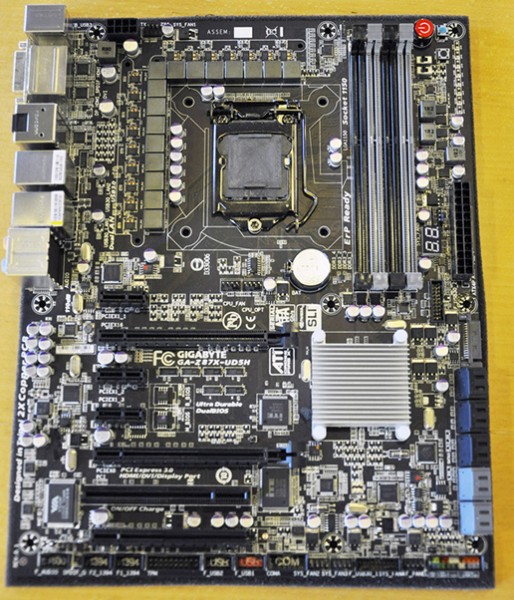
We are still rocking the PCI, along with ten SATA 6 Gbps ports (4 from controllers). While it is obvious from this shot the heatsinks are not final, there seems to be a substantial power delivery system in place and a full rear IO. I would expect to see a UD5H WiFi version on sale as well, also a UP5 soon after release with fewer IR3550s.
Gigabyte G1.Sniper 5
Sitting at the top of the gaming range for Gigabyte will be the G1.Sniper 5. This is the UD5H on steroids:
The VRM heatsink, with additional small fan, extends around the VRMs into the middle of the board (covering a PLX 8747) and onward onto the chipset. The PLX chip on board means that the layout will be x16/x16 to x8/x8/x8/x8 depending on the number of PCIe devices in use. We also get ten SATA 6 Gbps ports and Sound Core 3D audio, and I also notice two USB 3.0 headers on board which means that there are some controllers for USB 3.0 on the rear IO. I also spy six fan headers.
The audio solution on the G1.Sniper 5 is also a little different – a slide deck from Gigabyte has been released online which features a new OPAMP for audio enthusiasts:
With the motherboard comes two ICs (OPA2134 installed, LM4562NA in the package) and an upgrade kit with an additional three will be available for purchase in selected markets.
Sources: HardwareHeaven, TweakTown, KitGuru
Gigabyte G1.Sniper M5
Continuing on from the G1.Sniper M3, the M5 takes some of the Sniper 5’s features such as the OpAmp and puts it into the micro-ATX form factor.
Like the M3, we get the x16/x4/x8 PCIe configuration to allow for two triple slot cards, as well as our six SATA ports and USB 3.0 ports. Interestingly enough the socket area looks relatively clear apart from a couple of caps, which may make it nice for overclockers to insulate. I also like the single sided latches here.
Gigabyte Z87X-OC
Instead of retaining the UP7 name from Z77, it seems that Gigabyte want to resurrect the OC moniker for a pair of orange overclocking motherboards. First up is the Z87X-OC.
Even though all we have is this oblique camera shot, it is clear that Gigabyte is catering to the prosumer overclocker, especially when we compare this to the OC Force below. Nonetheless we have a vast array of OC Touch buttons next to the DIMMs, as well as DIP switches and voltage read points. Next to the SATA ports are two USB ports, ideal for overclockers that want to remove their screenshots without having to fiddle with the back panel (also for mice/keyboards). The PCIe layout is also a little different – notice how we do not have a PLX 8747 chip, but there is still slots for 4-way GPUs. This must mean that Gigabyte is applying a PCIe 3.0 x8/x4/x4 + PCIe 2.0 x4 arrangement, with the final x4 from the chipset. This means the board will go up to 4-way Crossfire, but only 2-way SLI (you need at least an x8 for SLI) – but scaling on that final x4 might be a bit of a stretch for all but compute that does not need the bandwidth.
Gigabyte Z87X-OC Force
The OC Force will be the UP7 equivalent for Haswell. We get that PLX 8747 chip for x8/x8/x8/x8 on the PCIe, along with what looks like a bypass lane to run x16 on a single card without the PLX. A trend in motherboard manufacturers is to now have a VRM heatsink with an integrated water cooling pipe, and now Gigabyte have this model:
Chipset fans are a feature of the model, but I would assume they can be adjusted in the software. Like the OC, we get OC Touch buttons along the side, but instead of USB ports we have 10 SATA ports, and at least 10 total USB 3.0 ports. On the rear IO it looks like dual HDMI with DP, as well as dual NIC.
Gigabyte Z87N-WiFi
Everyone likes a good mITX board, and Gigabyte are creating a new version of the Z77N-WiFi (we reviewed the H77 model last September). On the face of it we have a pretty middling mini-ITX board, with a clear spot for a WiFi card, and four SATA 6 Gbps. The memory is right up against the edge, meaning the 4-pin CPU connector is in the middle of the board, causing cables to reach over components.
Gigabyte BIOS
There have been some leaked shots of the Gigabyte BIOS, which looks like a big update from the ‘3D BIOS’ of old:
Zooming out we can see this is BIOS F3B for the Z87X-OC Force, as well as a few voltages. But this seems great – we have all the information regarding the motherboard in the front screen all the time. I have been going on and on about this since the start of UEFI, and I am glad this is part of the evolution!
Gigabyte Software
A few images have also come through regarding the new version of EasyTune:
In the past I have been critical of the way that Gigabyte handles the fan controls in ET6, but this new version looks good, with a few more automatic overclock options as well.


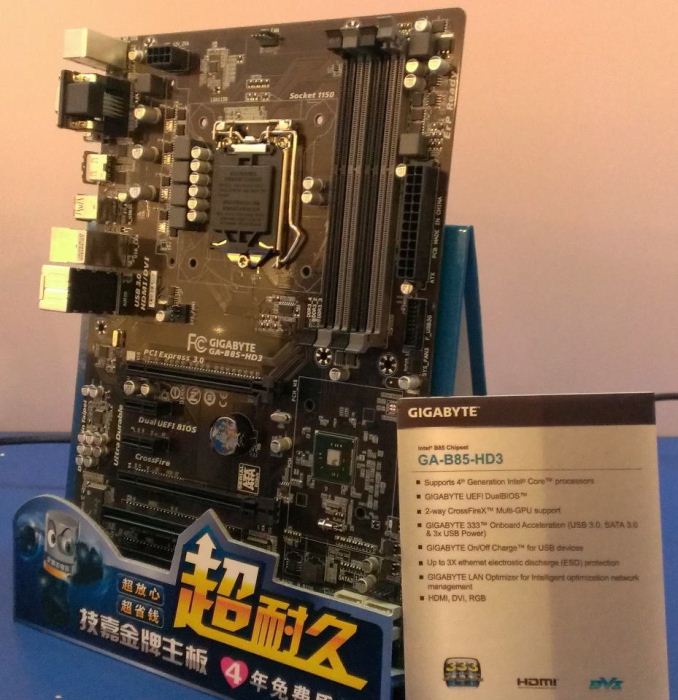
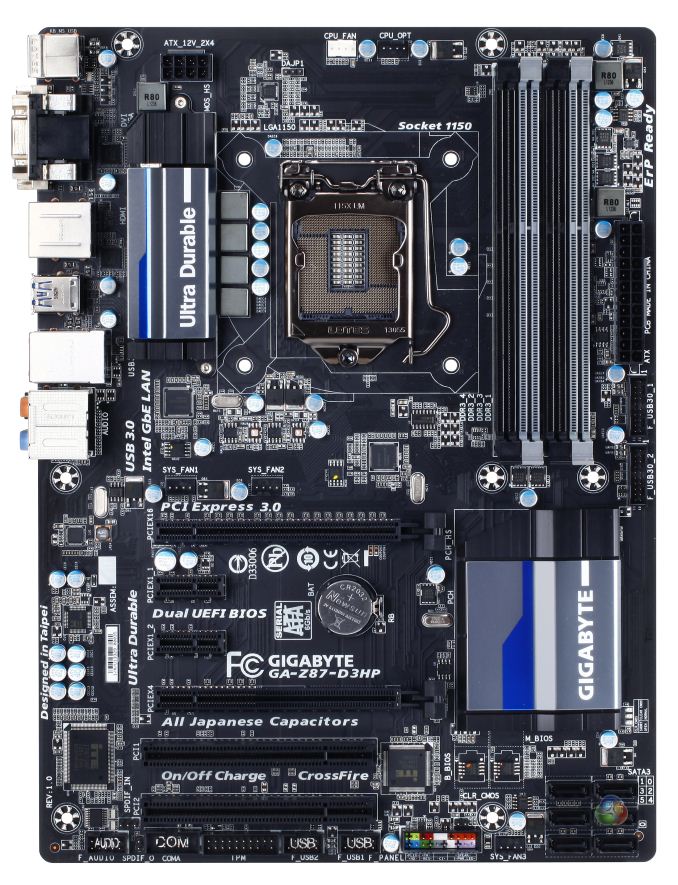
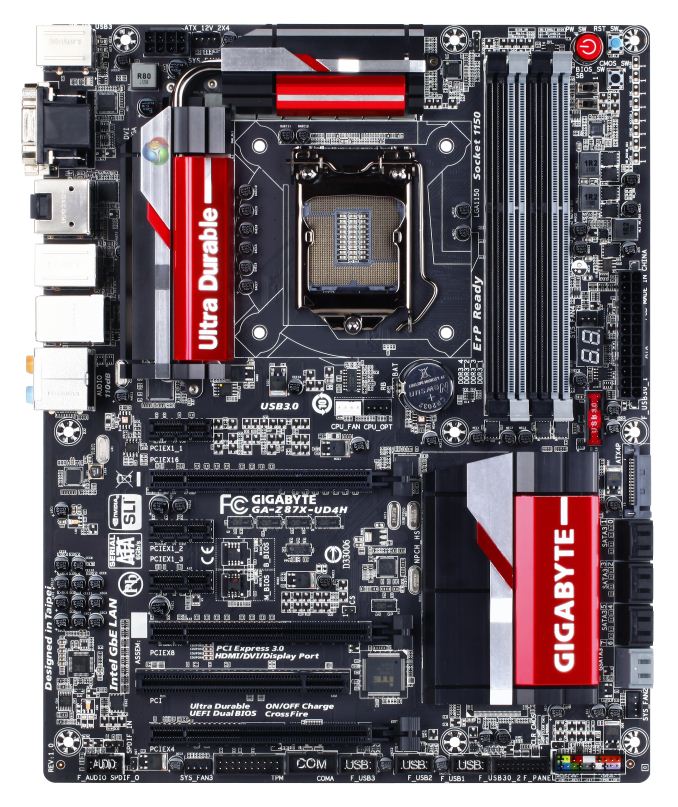

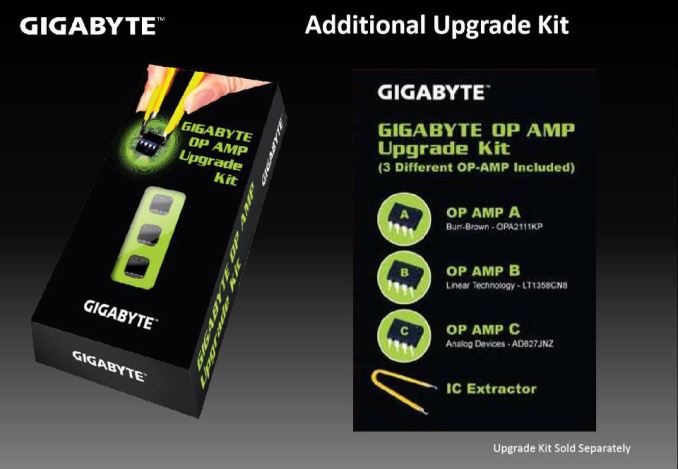
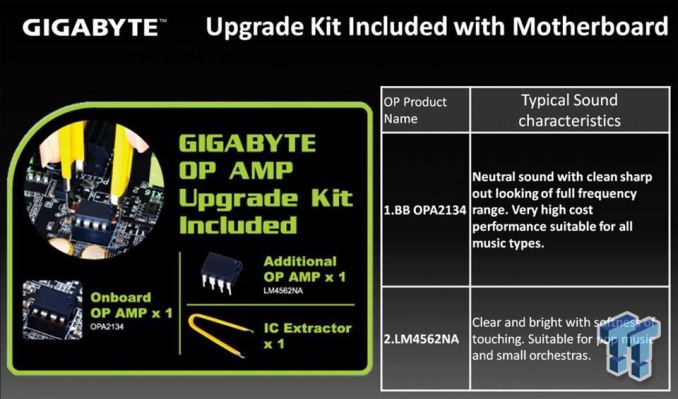
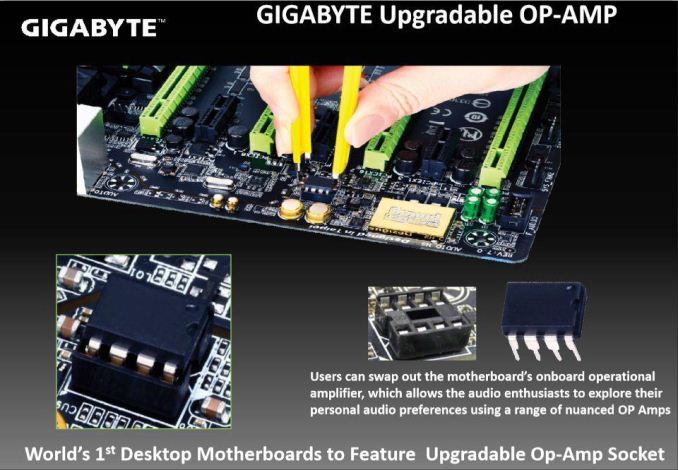
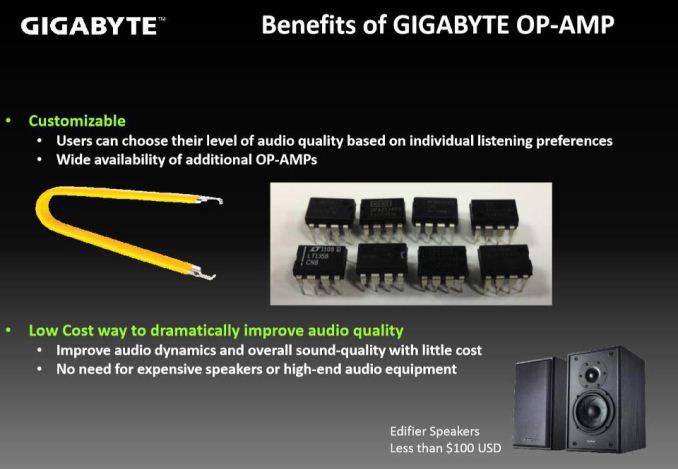
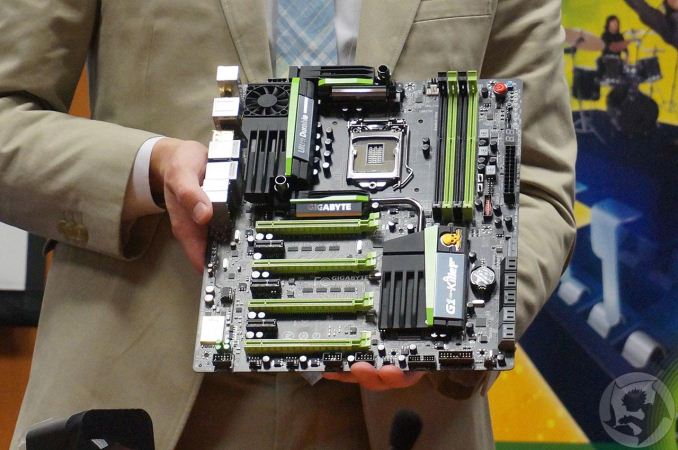

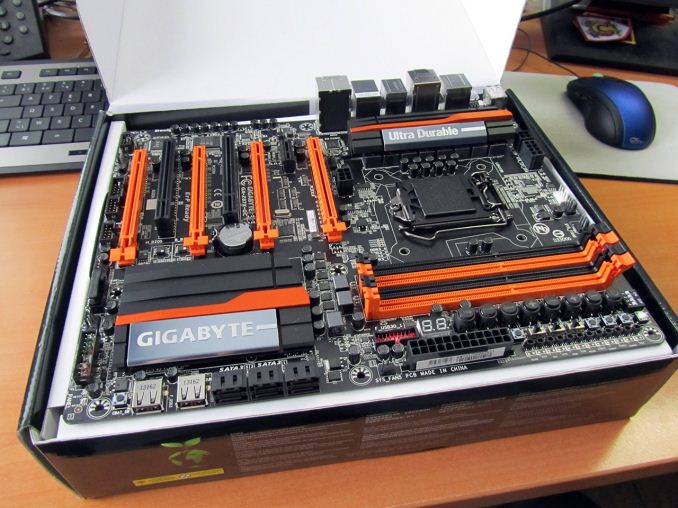
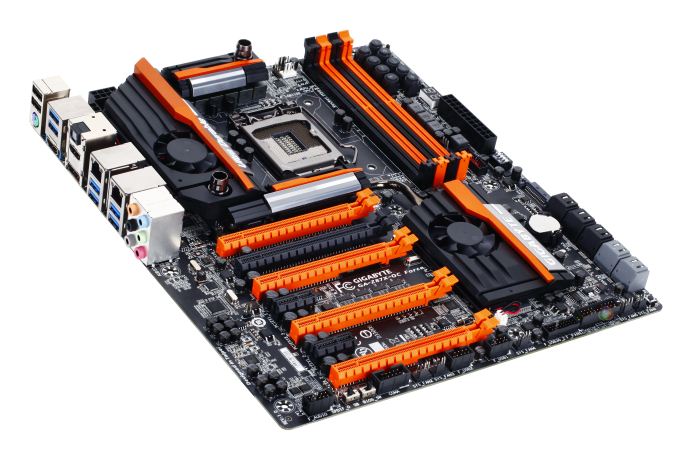
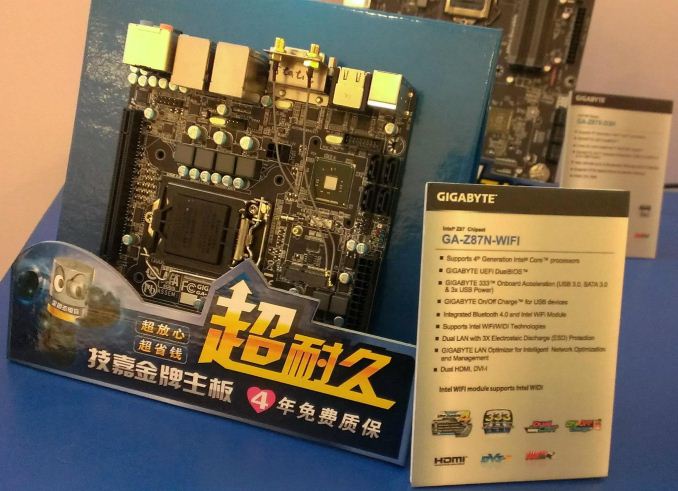
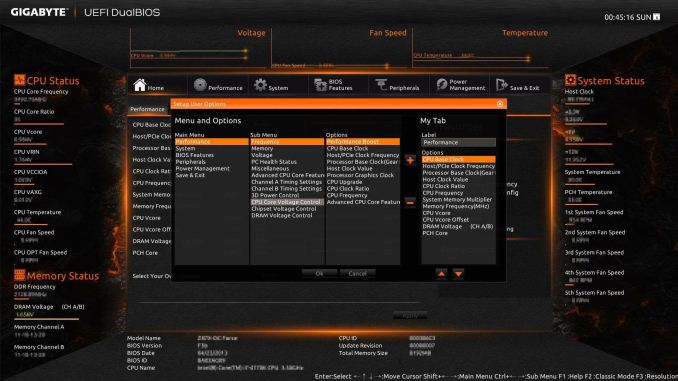
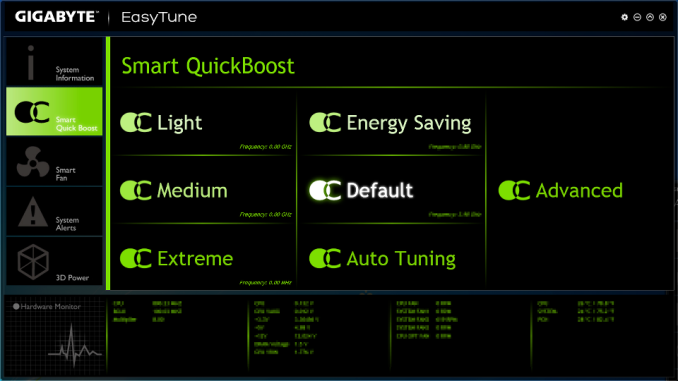
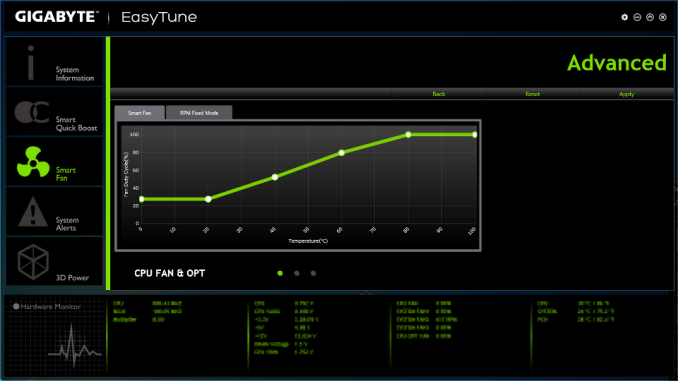














70 Comments
View All Comments
Diagrafeas - Wednesday, May 22, 2013 - link
I see that the previous generation trend continues.They have 2 Physical PCI Express x16 slots and the one is electrically x4.
Why not x8?
And these boards are too few. Most have 3 PCI Express x16 physical.
Seriously how many people use three graphic cards?
meacupla - Wednesday, May 22, 2013 - link
For that matter, most people's needs can be satisfied with mATX or mITX.1x video card, if at all.
1x premium sound card, if at all.
The only reason to use ATX is if you want to give your video cards some breathing room.
Someguyperson - Wednesday, May 22, 2013 - link
I would really like to see a roundup of all the mITX boards. mITX seems to be the future and it seems like all the integration of everything in Haswell would really make a much better product than the last generation.Mr Perfect - Thursday, May 23, 2013 - link
I second that, if only because mITX is usually a second thought to ATX and mATX.silenceisgolden - Wednesday, May 22, 2013 - link
Really surprising that I don't see these specs, together on any of the boards:2 USB3 headers onboard
PS/2 omitted
2 USB2 headers
mSATA
Wi-Fi AC (also, Wi-Fi Direct anyone?)
PCIe layout of x8, x16 bypass, x8, x1, x8, x1, x8
10 6G/s SATA
I think the closest I can get is the Gigabyte z87X-OC Force, but it still seams to be missing Wi-Fi. I think there will be a decent market for USB3 Wi-Fi ac sticks during this generation.
silenceisgolden - Wednesday, May 22, 2013 - link
I also don't get why DVI and especially VGA are included on any model for this generation. Seems like a huge waste of space.JDG1980 - Thursday, May 23, 2013 - link
DVI allows the use of cheap 1440p monitors from South Korea.That said, I think enthusiast boards should break out all the video connectors on PCI brackets, so people who will be using discrete cards (probably a majority of buyers) can get a clean I/O panel.
Mr Perfect - Thursday, May 23, 2013 - link
People could use a $5 cable from Newegg to turn an HDMI output into an DVI though. They have cables that go the other way too, but then you're limited by the DVI port(no sound, etc).silenceisgolden - Thursday, May 23, 2013 - link
We're going to start seeing 4K panels hit the US soon enough though, and I'd rather a 1600p panel over those 1440p ones to be honest. And that PCIe board sounds like a brilliant idea, but Intel wants to shut out the graphics market except the very high end, not cater to gamers.Azethoth - Thursday, May 23, 2013 - link
PS/2 omitted is an ignorant request: PS/2 keyboards remain superior to USB based keyboards.You can read all about it in the various excellent high end keyboard articles. The bottom line is that PS/2 can accurately detect whatever you type in: single keys, multiple keys, chords, all the way up to a full faceroll. USB keyboards are lucky if they can manage above 6-key rollover, some high end ones trumpet their prowess at 20-key rollover. There are other issues as well.
Now my APM is too low to care so I am rocking said USB based 20-key rollover capable Corsair K-90 and every time I feel like facerolling or bashing the keyboard double handed like a monkey on meth I just refrain. However, a lot of people will not give up their superior PS/2 hardware.